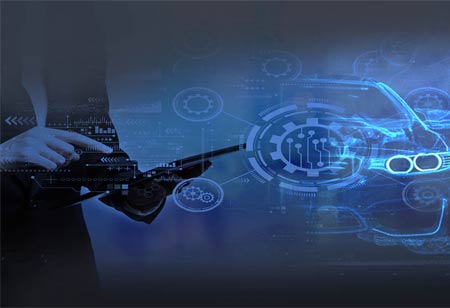THANK YOU FOR SUBSCRIBING
THANK YOU FOR SUBSCRIBING
Be first to read the latest tech news, Industry Leader's Insights, and CIO interviews of medium and large enterprises exclusively from Auto Tech Outlook

By
Auto Tech Outlook | Tuesday, February 20, 2024
Stay ahead of the industry with exclusive feature stories on the top companies, expert insights and the latest news delivered straight to your inbox. Subscribe today.
Sensors are driving advancements in autonomous driving, safety, driver assistance systems, and connectivity.
FREMONT, CA: Sensors have become a crucial component in modern vehicles, pivotal in advancing the automotive industry. In a rapidly evolving landscape, sensors are essential for the development of autonomous vehicles, as well as enhancing safety, improving driver assistance systems, and enabling a more connected and interactive driving experience. When we discuss automotive sensors, we refer to a broad range of technologies that provide vehicles with the ability to sense and interact with their surroundings. These sensors include cameras, radar systems, and LiDAR (Light Detection and Ranging) devices. Each of these sensors has its unique capabilities, applications, and advantages.
Cameras are among the most familiar and human-like sensors in vehicles. They capture visual data from the vehicle's surroundings and provide valuable information to onboard computer systems. This data includes images of the environment, other vehicles, pedestrians, cyclists, road signs, signals, and the trajectory of curbs. Advanced algorithms process these images, enabling critical safety features such as lane-departure and forward-collision warnings.
LiDAR, a light-based sensor technology, operates by emitting rapid laser pulses that bounce back when they encounter obstacles. These obstacles can include other vehicles, cyclists, pedestrians, or even objects like mailboxes. LiDAR calculates the distance between the vehicle and the obstacle by measuring the time it takes for the laser pulse to return accurately. There are two primary types of LiDAR: mechanical and solid-state. Mechanical LiDAR uses mechanical parts to drive the laser beam, providing high accuracy and a 360-degree field of view, but it comes at a higher manufacturing cost. Solid-state LiDAR relies on electronic components to control the laser emission angle, which makes it more affordable, though it has limited scanning angles and slightly reduced accuracy.
3D Time-of-Flight (3DToF) LiDAR is emerging as a versatile sensor suitable for numerous short-distance automotive applications. It can capture intricate details, enhancing camera sensors with the ability to measure distance and volume. In the automotive context, 3DToF LiDAR has applications in object tracking, gesture recognition, reactive altimeters, and providing a 360-degree view outside the vehicle to aid in parking.
LiDAR offers several advantages when used as a sensor in autonomous vehicles. It excels in range, angular and speed resolution while resisting interference. LiDAR provides an extensive dataset, including an object's distance, angle, speed, and reflection intensity, allowing for the creation of multi-dimensional images. The choice between short or long-distance LiDAR architecture depends on the specific functions it serves inside and outside the vehicle, including support for autonomous driving.
As vehicles progress toward higher levels of autonomy, the ability to "see" the surrounding environment remains a primary function of sensor technology. Cameras, radar, and LiDAR all contribute to external guidance and safety measures. However, these sensors are not limited to external applications; they also play a role inside the vehicle, enhancing the driving experience within the increasingly digitized cockpit.
Short-distance LiDAR, in particular, has the potential to monitor the state of the driver and passengers, enabling more advanced features. This includes adjusting airbag deployment force, optimizing a heads-up display through head positioning detection, recognizing specific drivers and passengers through facial recognition to adjust pre-defined preferences, and enabling touchless controls through gesture recognition.
 Copyright © 2025 AutoTech Outlook. All Rights Reserved | Privacy Policy | Subscribe | Sitemap | About us | Feedback Policy | Editorial Policy
Copyright © 2025 AutoTech Outlook. All Rights Reserved | Privacy Policy | Subscribe | Sitemap | About us | Feedback Policy | Editorial Policy 



